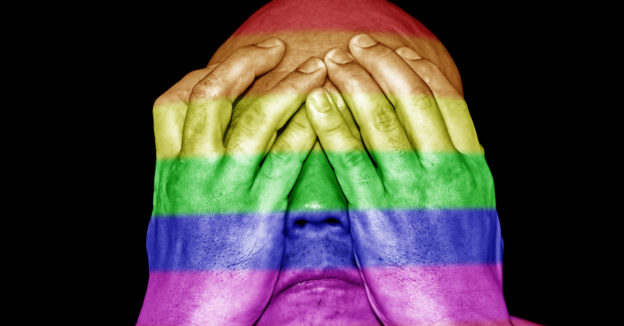With many gay and bisexual sex addicts, negative core cognitions are an integral component of the addictive process, helping to support a shame-based sense of self. These non-affirming views of self often manifest as internalized homophobia, which is nearly always magnified and intensified by social and familial non-acceptance and non-support. Then, when addictive same-sex sexuality enters the picture, pre-existing shame and self-hatred are compounded, with the only relief being a temporary escape through still more addictive sex, which leads to even more shame and self-hatred, followed by more addictive sex, etc. This is the crux of the sexually addictive cycle for many gay and bisexual addicts – layering shame upon shame and perpetually reinforcing an already badly distorted self-image.
Knowing this, it is unsurprising that some gay and bisexual sex addicts also present in treatment with ego-dystonic (self-loathing) feelings related to their sexual orientation. In other words, they desperately wish that they were not attracted to members of the same sex. Ultimately, these addicts must be treated for their negative feelings related to their sexual orientation as well as their problematic patterns of sexual acting out. That said, containment of the addictive sexual behaviors should always be the initial intervention and treatment focus. In other words, when dealing with sexual addiction, secondary issues, including ego-dystonia about sexual orientation, should be acknowledged early in the process (as a form of shame reduction), but in-depth exploration and processing should be postponed until the addict is stabilized and a modicum of sexual sobriety has been established.
Under no circumstances should a clinician try to alter a client’s sexual orientation. Sexual orientation is fixed and immutable, and any attempts to change it are pointless. In other words, gay men are sexually and romantically attracted to other men, lesbians are sexually and romantically attracted to other women, bisexuals are sexually and romantically attracted to both genders, and heterosexuals are attracted to the opposite sex – and no amount of aversion therapy, talk therapy, social pressure, or prayer is going to change that. A person can choose to not act on his or her same-sex attractions, but that won’t make those attractions go away.
If you’re struggling to accept this idea, let us flip the script for you by asking: Do you think conversion therapy could turn a heterosexual man into a homosexual? We’re guessing that your answer to that question is an unqualified no. And if your answer is indeed no, then why would you think it’s possible to turn a gay person straight? So, once again, individuals can choose to not act on their sexual orientation, but that will not make their orientation go away.
The proper therapeutic approach when working with a sex addict who is struggling to accept his sexual orientation is to create a safe and empathetic space in which he can reflect upon and examine what he is thinking and feeling. To state or even imply that such a client’s sexual orientation can and should be changed is a disservice and likely to be counterproductive (by feeding his shame and self-loathing). The therapist’s job is to help this individual understand and accept the reality of his sexual orientation, and to then make intelligent, life-affirming decisions about what he wants to do (and not do) with that orientation.
